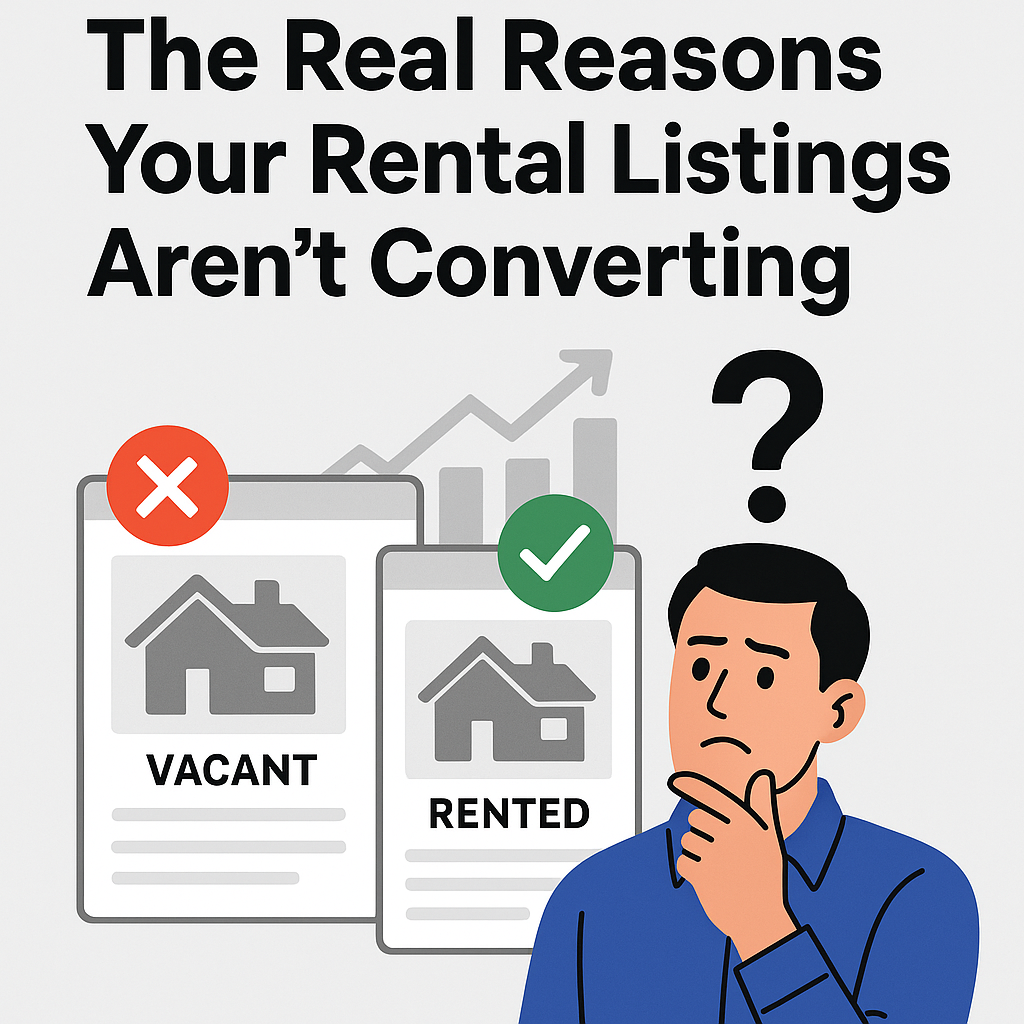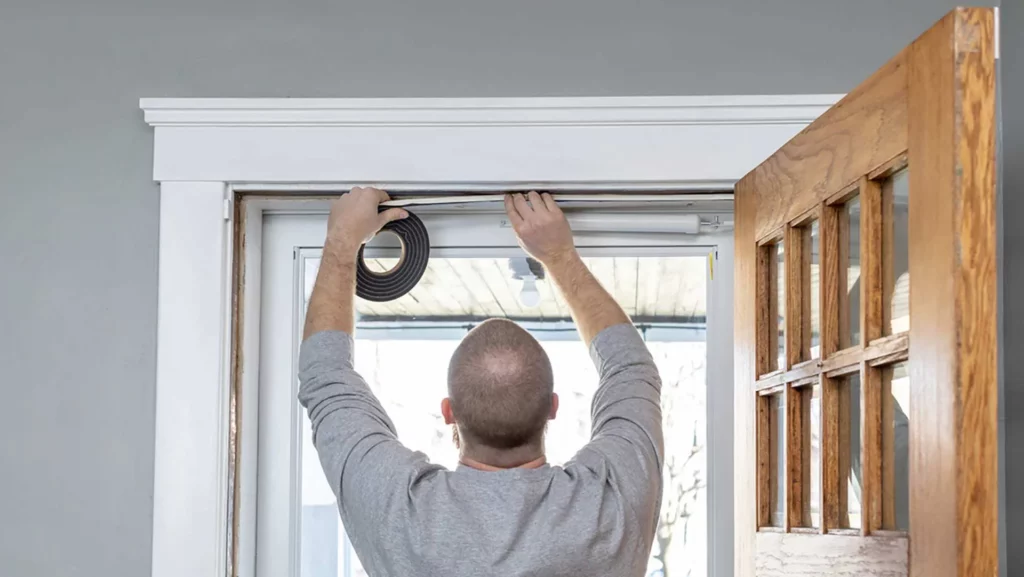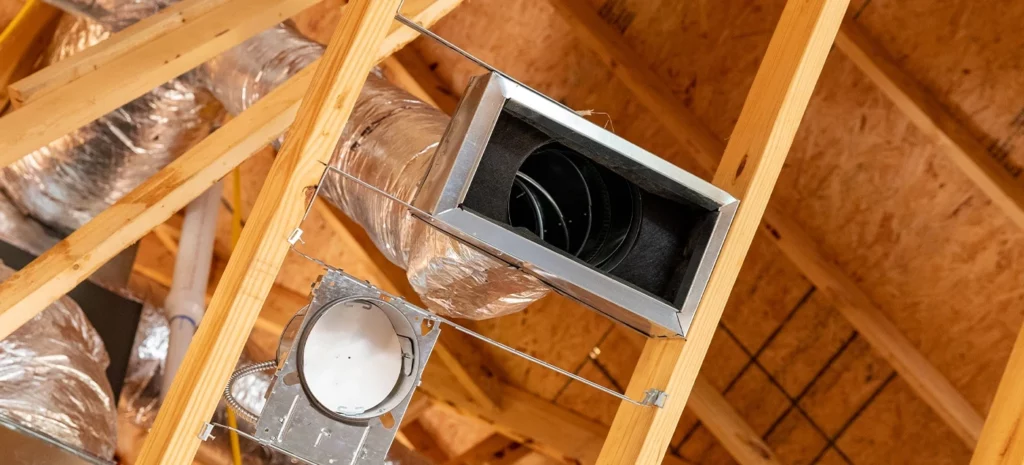Why Your Rental Listings Aren’t Converting (And How to Get More Applications)
Ever posted what you thought was the perfect rental listing, only to get crickets instead of calls?
You’re not alone. Property managers and landlords everywhere are scratching their heads wondering why their vacancies aren’t filling despite a supposedly hot rental market.
The truth is, getting qualified applicants isn’t just about having a good property – it’s about marketing it effectively. And in today’s digital-first rental market, the old ways of attracting tenants simply don’t cut it anymore.
Let’s talk about why your listings are being ignored and what you can do to start getting applications flowing in.
The Real Reasons Your Rental Listings Aren’t Converting

Before we dive into solutions, let’s pinpoint exactly why those perfect-on-paper listings aren’t translating to applications:
1. Your Response Time Is Killing Your Chances
Here’s a shocking stat: leads responded to within 5 minutes are 100 times more likely to convert than those contacted after 30 minutes.
Let that sink in.
In a world where tenants can browse dozens of properties in minutes, they’re not waiting around for you to get back to them tomorrow – or even later today. If they don’t hear back quickly, they’re already moving on to the next option.
2. Your Listing Photos Are Turning People Away
Poor quality, poorly lit, or too few photos are the #1 reason potential tenants skip over listings. According to research, listings with 20+ quality photos get 80% more inquiries than those with just a few images.
That dark, blurry picture of your kitchen? It’s costing you thousands in extended vacancy time.
3. Your Description Lacks Essential Information
Generic descriptions that read “Nice 2BR/1BA apartment” tell potential tenants absolutely nothing about why they should choose your property over the dozens of others they’re considering.
When people can’t find answers to basic questions like “Is parking included?” or “Are utilities covered?”, they don’t call you for clarification – they just move on.
4. You’re Making the Application Process Too Complicated
Today’s renters expect convenience. If they need to print forms, scan documents, or make an in-person visit just to apply, many won’t bother – especially the most qualified tenants who have plenty of options.
5. Your Online Presence Doesn’t Build Trust
In 2025, tenants Google everything – including you and your property. If your online presence is non-existent or filled with negative reviews, quality applicants will hesitate to apply, no matter how nice your property looks.
Now that we understand what’s going wrong, let’s talk about how to fix it.
7 Proven Strategies to Get More Rental Applications
1. Master the Art of Lightning-Fast Responses
The data doesn’t lie: response time is the single biggest factor in converting rental inquiries into applications.
How to implement this:
- Set up automated responses that instantly acknowledge inquiries
- Use a centralized lead management system like Propertese to capture leads from multiple listing sites in one dashboard
- Enable mobile notifications so you never miss an inquiry
- Pre-write answers to common questions that you can quickly personalize and send
Propertese’s lead capture system automatically imports all inquiries from Zillow, Apartments.com, and other listing sites into a single platform, allowing you to respond within minutes rather than hours. This simple change can double or even triple your conversion rate.
2. Upgrade Your Visual Content Strategy
Today’s rental market is driven by visuals. Professional-quality photos are no longer optional – they’re essential.
How to implement this:
- Invest in professional photography (costs about $150-300 but pays for itself many times over)
- Include at least 15-20 high-quality photos that show every room plus exterior views
- Add a virtual tour or video walkthrough (properties with video tours receive 87% more inquiries)
- Stage the property, even minimally, to help tenants visualize living there
Remember: your photos aren’t just showing a property – they’re telling a story about the lifestyle tenants can expect if they choose your rental.
3. Create Compelling, Information-Rich Descriptions
The best listings answer questions before potential tenants even think to ask them.
How to implement this:
- Start with an attention-grabbing headline that highlights unique features
- Front-load key information: price, bedrooms, bathrooms, square footage, and location
- Detail all amenities, utilities, and inclusions
- Be specific about pet policies, parking situations, and lease terms
- Highlight neighborhood amenities and transportation options
- Include clear instructions on how to schedule a viewing or apply
Propertese allows you to create standardized, information-rich templates for your listings, ensuring that no critical details are ever missed. These comprehensive listings show up better in search results and convert at much higher rates.
4. Streamline the Application Process
Every extra step in your application process reduces your conversion rate by 20%. Make applying so easy that tenants can do it on a lunch break.
How to implement this:
- Offer a fully online application process
- Allow document uploads directly from mobile devices
- Accept electronic signatures
- Provide multiple payment options for application fees
- Create a simple tracking system so applicants know where they stand
With Propertese’s integrated application management system, potential tenants can move from inquiry to completed application in minutes rather than days, dramatically increasing your conversion rates.
5. Leverage Smart Pricing Strategies and Incentives
Sometimes the difference between zero applications and multiple applications comes down to psychology and incentives.
How to implement this:
- Consider slightly lower pricing to appear in more search results (a $25 price reduction can increase views by 30%)
- Offer move-in specials like reduced security deposits or one week free
- Lower application fees or make them refundable if approved
- Create urgency with limited-time offers
- Bundle utilities or include popular amenities like internet
Using Propertese’s pricing analytics tools, you can find the sweet spot for your rental rate and identify which incentives will deliver the best ROI for your specific market.
6. Modernize Your Showing Options
Today’s renters want flexibility and options when viewing properties.
How to implement this:
- Offer self-guided tours using secure lockbox technology
- Create high-quality virtual tours for remote viewings
- Schedule group showings for popular properties
- Provide after-hours and weekend showing options
- Follow up immediately after showings
Propertese’s showing management tools allow you to coordinate multiple showing options while maintaining security, creating a better experience for prospects and significantly increasing application rates after viewings.
7. Build a Strong Online Reputation
Your reputation often determines whether qualified tenants will even consider your properties.
How to implement this:
- Actively manage your online reviews on Google, Yelp, and social media
- Showcase testimonials from happy tenants
- Respond professionally to all feedback, especially negative reviews
- Maintain an updated, professional website or profile
- Share content that demonstrates your expertise and reliability
Propertese helps you manage your online reputation by automatically soliciting reviews from satisfied tenants and providing response templates for maintaining a professional online presence.
Common Mistakes to Avoid When Trying to Increase Applications
Even with the best strategies, these common pitfalls can undermine your efforts:
Targeting the Wrong Audience
Not all marketing channels work for all properties. A luxury downtown loft needs different marketing than a suburban family home.
Solution: Use Propertese’s tenant demographic tools to identify where your ideal tenants are searching and focus your efforts there.
Inconsistent Communication
Responding quickly at first but then going silent or taking days to answer follow-up questions destroys trust.
Solution: Propertese’s communication tracking ensures no conversation falls through the cracks, maintaining consistent response times throughout the inquiry process.
Neglecting Pre-Qualification
Showing properties to unqualified prospects wastes everyone’s time and extends vacancy periods.
Solution: Implement pre-qualification questions through Propertese’s automated screening tools to focus your energy on serious, qualified applicants.
Not Tracking Performance Data
If you don’t know which listings and channels are performing best, you’re marketing blindly.
Solution: Propertese’s analytics dashboard shows exactly which listing sites, photos, and description elements generate the most inquiries and applications, allowing you to continuously optimize your approach.
How to Get Started Improving Your Conversion Rates Today
Ready to transform your rental listing performance? Here’s a simple 3-step plan to get started:
Step 1: Audit Your Current Process
- Review your last 5-10 listings and response patterns
- Calculate your average response time to inquiries
- Evaluate the quality of your photos and listing descriptions
- Analyze which properties filled quickly and which lingered
Step 2: Implement the Quick Wins
Start with these high-impact, low-effort improvements:
- Set up an automated response system for inquiries
- Improve your property photos (even smartphone photos can be dramatically better with good lighting)
- Add more detailed information to your listings
- Make your application process fully digital
Step 3: Build a Comprehensive System
To sustain improvement over time:
- Adopt a unified platform like Propertese to manage listings, inquiries, and applications
- Create templates and standards for all your marketing materials
- Establish response time goals and track performance
- Continuously test different approaches and measure results
The Bottom Line: Consistency and Speed Win the Application Game
In today’s competitive rental market, the properties that win aren’t always the newest or most luxurious – they’re the ones marketed with consistency, professionalism, and responsiveness.
By implementing the strategies above, you can dramatically increase your application rates while simultaneously reducing your workload through automation and streamlined processes.
Remember: every day a property sits vacant costs you money. Investing in better listing practices doesn’t just get you more applications – it directly improves your bottom line.
Ready to transform your rental listing performance?
Propertese is an all-in-one property management platform helps you implement all these strategies through a single, easy-to-use dashboard. From automated responses to application tracking, Propertese streamlines every step of the process so you can fill vacancies faster with better-qualified tenants.
Schedule a demo today to see how Propertese can help you get more applications and fill vacancies faster than ever before.
















